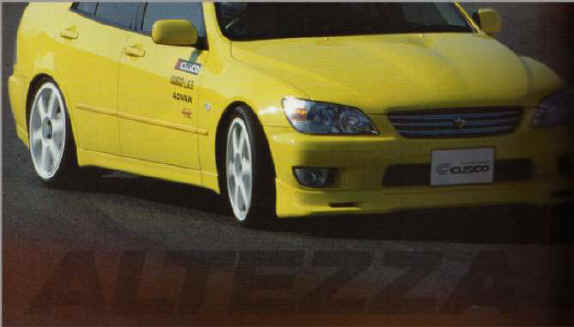

The Proper Drift...?
For Motorsport and Drifting Competitions
By Moto-P
In recent years drifting has become a popular demonstration and exhibition sport. What began as just a bunch of enthusiasts doing donuts in parking lots have grown to serious competition in Japan and elsewhere using small race tracks. Specialized engine and suspension tuning have evolved from the harsh competitions and events. However, the true and purest form of drift was perfected by race drivers and autocrossers long before it's popularity. Here we'll take a look at the proper drifting style and compare it to more recent exhibition drifts.
When one describes a "drift," we usually associate a car in massive oversteer trying to negotiate corners that have been approached too fast or cars exhibiting too much power for the traction available. Not so long ago, tire technology was based on bias ply tires in race tracks. With these lower grip tires (by today's standards) the race car drivers had to rely on oversteer to change the direction of the car in such way to find the earliest acceleration point of the track. Even open wheeled racers in those days displayed significant oversteer, which is rarely seen these days. With the advent of high grip compounds and radial structure, a higher turn-in response was achieved and the concern for the fastest line became more of a stability issue. The less drift angle, the more stable and therefore more grip as tire's contact patch was maintained even without deformation. In low traction racing such as various rallies on dirt and snow still depends on oversteer to change direction to this day. But enough history...
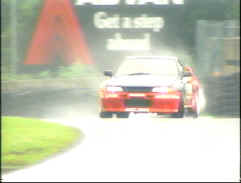

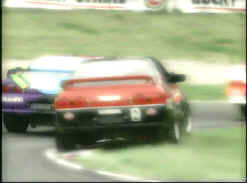
4wd Skyline at rainy day... traction can be used to accelerate as well as to control direction of travel. NSX on trail drift as late braking forced the rear to break. Lastly, a Skyline hit's an early apex, gets on 2 wheels and tries for an opening which only drift-competent drivers dare...
In real racing field on asphalt surfaces, drift became less apparent to the novice eye. But, in fact today's racing drivers need much higher level of drifting skill as cars are more twitchy with bogs of tire grip resting on a thin racing line...not to mention that cornering speeds are scary fast. With a clean lap of the track without passing, a smooth neutral cornering is the fastest way around. However, a driver can rarely get past another car by tracing the same line and obeying the laws of braking points. Frequently, 2 or more race cars go into one corner trying to late-brake each other. With a successful pass in this situation, a driver is usually too late for a clean line and the car will exhibit some oversteer...thus drift... Here, he will struggle to get the car back on line as soon as possible as quickly as possible. A drifting car is losing time because the traction and lateral grip is lower on a tire with skidding going on. It is here where master drivers shine as his loss of speed is minimal and the cars can take alternate cornering lines and braking points where less skilled drivers would not dare.
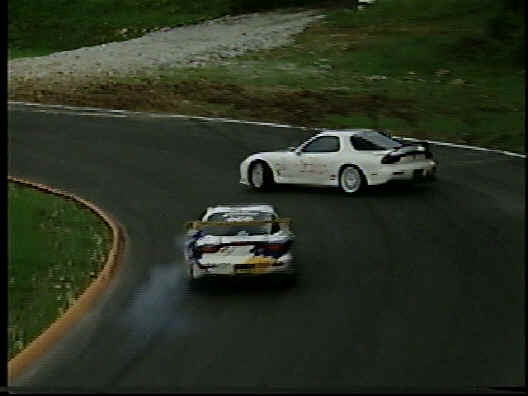
Drift Block...the white FD3S will have a tighter line on exit and will effectively slow down the car behind as he has no where pass. In some race categories, this is illegal or frowned upon...in more agressive competitions such as Australian and British Touring Cars, it's a crowd pleaser and done often...


Notice the slight drift angle of the TRD Levin AE86 (above)... The throttle is now buried to the floor as it can steer into the correct line with the rear tail-slide control and apex reached longer and earler... Cars that aren't overpowered can use this to gain a tighter line and earlier throttle opening...making the corner smaller and faster...
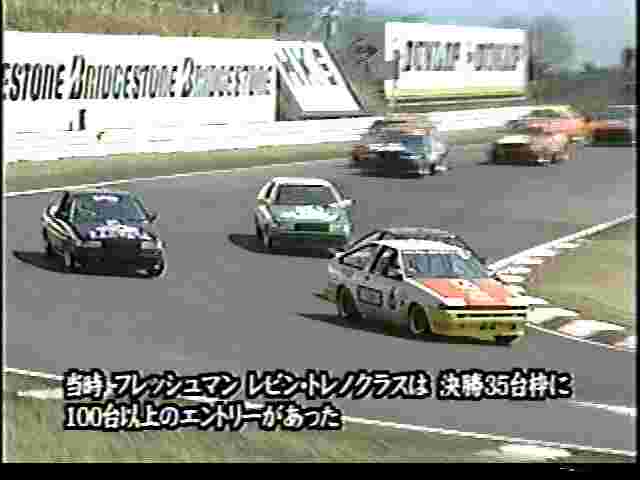
There are those who argue that "grip" style driving is the fastest way...that drifting is a slow way aroud corners... In theory this is very true... But, in multiple car competitions, the more options the driver has in terms of his line, braking points and skill, the more chances he'll have to pass the leading car that's blocking his "proper line."
You see now, that a guy who can drift well, fast and accurate, is the best of "grip" style drivers. He would know his tire's limits better, has more control beyond limits, and more lines to pass are available to him with very predictable results.
This basic understanding takes us to the next topic, drift competitions. IN the top level of sideways festivals, the drivers are judged for accurate lines, section elapsed times in each corner and execution. The crowd is moving away from unnecessary performances and are beginning to look much like WRC drivers. This is not to say that flashy faints and side braking is no good... They are still pretty much a skill one should have. But one should be able to distinguish proper drifting techniques that really has value in making a car go fast and stuff to pull off to entertain spectators. The best of the best however have combined both of the above. Take for example, Izumide...a drift veteran who is well known throughout Japan as the "king of destruction" He would pull of a faint motion drift from 1/8th of a kilometer at 160km/h (100mph) and use all of his braking zone sideways and maintain his max cornering speed into a corner and still clip the apex for a straight launch for an exit.
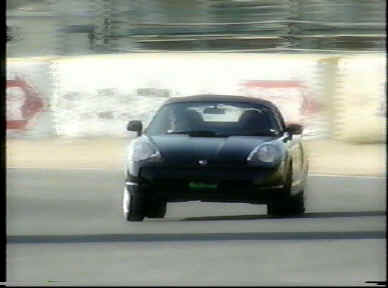

MRS with high traction and low power exhibits low angle drift just to tuck in a line... An S14 on the contrary with low traction and high power can correct any line any time albeit losing a little time...(Japanese agree that the S14 is the best drifter car...for the masses)
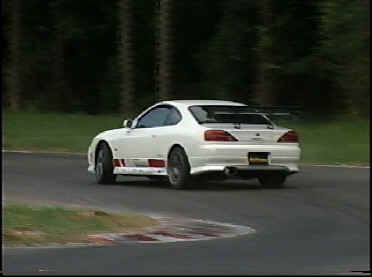
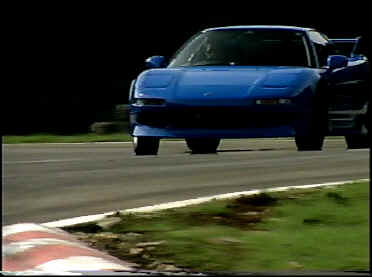
An S15 Silvia at power oversteer...while NSX is using faint-motion drift to negotiate a set of esses with front tires never leaving the cornering line... The latter is the most difficult skill when driving a mid engine car like the NSX, but nevertheless demonstrated by "Tsuchiya" the drift king...
Another would be Taniguchi, who uses the dirt run-off area to drop his rear tires just so he won't scrub speed with sliding rear tires on pavement. He often uses this technique to connect a series of corners by traveling completely sideways in between them. Of course, points are given for very few runs and seldom a full lap of the track so tire damage isn't a concern here...but speed still is. Anyway, the biggest difference here is that it still remains a very fun oriented style and not so serious as other typical motorsport event.
Well, that's the rundown...
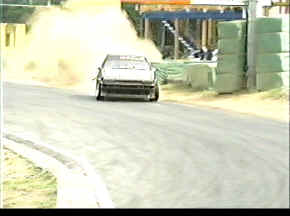
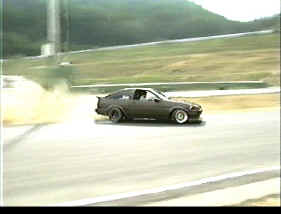

The Dirt Drop method to carry a longer, faster drift...loss of traction at the rear only...in drift exhibition events...
Now, if you want to get more practice, you can go to www.speedtrialusa.com for an event you can take your own car and drift the hell out of it... It's much safer than public roads and you won't have to have the police car chasing after you... Try it out! If you like it, there's no stopping you!
I'll see you there...
----Moto-P
e-mail Moto-P: trueno@club4ag.com